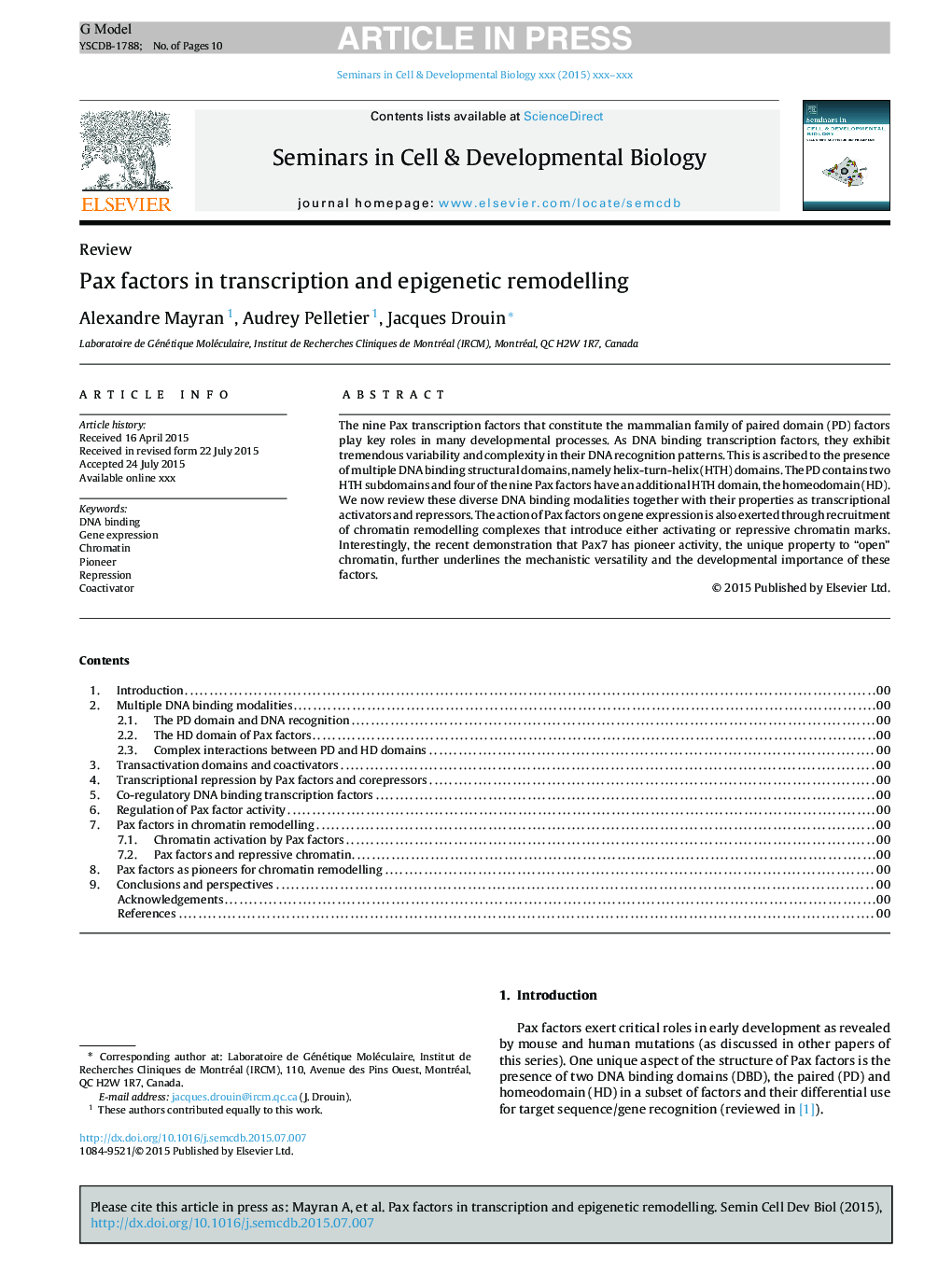| Article ID | Journal | Published Year | Pages | File Type |
|---|---|---|---|---|
| 8480342 | Seminars in Cell & Developmental Biology | 2015 | 10 Pages |
Abstract
The nine Pax transcription factors that constitute the mammalian family of paired domain (PD) factors play key roles in many developmental processes. As DNA binding transcription factors, they exhibit tremendous variability and complexity in their DNA recognition patterns. This is ascribed to the presence of multiple DNA binding structural domains, namely helix-turn-helix (HTH) domains. The PD contains two HTH subdomains and four of the nine Pax factors have an additional HTH domain, the homeodomain (HD). We now review these diverse DNA binding modalities together with their properties as transcriptional activators and repressors. The action of Pax factors on gene expression is also exerted through recruitment of chromatin remodelling complexes that introduce either activating or repressive chromatin marks. Interestingly, the recent demonstration that Pax7 has pioneer activity, the unique property to “open” chromatin, further underlines the mechanistic versatility and the developmental importance of these factors.
Related Topics
Life Sciences
Biochemistry, Genetics and Molecular Biology
Cell Biology
Authors
Alexandre Mayran, Audrey Pelletier, Jacques Drouin,
